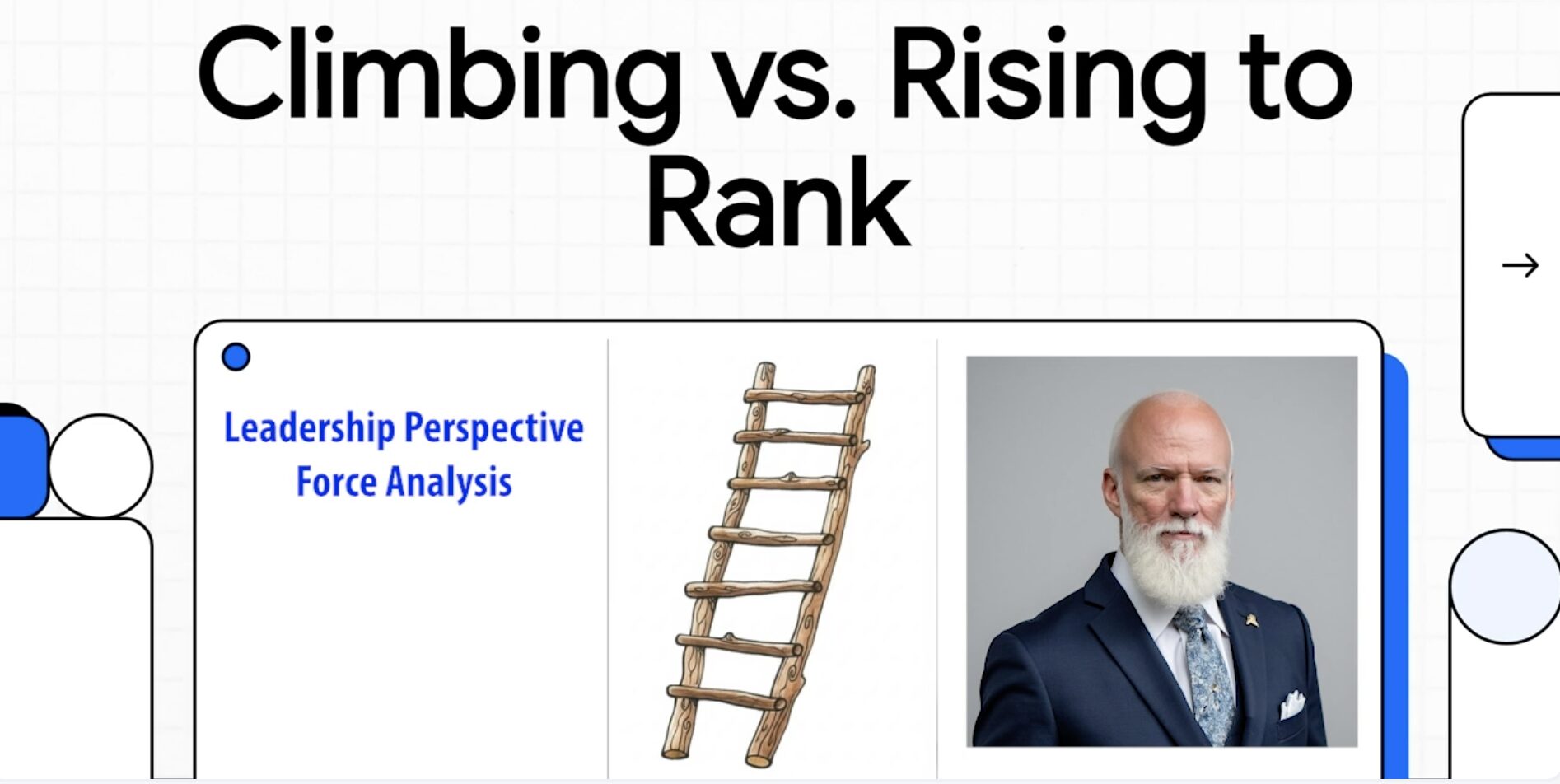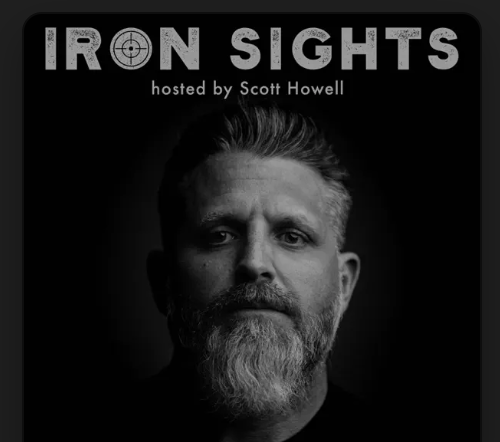“Take a Step Back”
Law enforcement in 2025 is a vastly different landscape than it was in the 1990s when officers like Daniel King and Jamie Borden began their careers. The rise of body cameras, public scrutiny, and evolving legal standards have transformed how officers operate and how their actions are evaluated. In a recent discussion, King and Borden, both seasoned law enforcement professionals, explored these changes, focusing on the recent Barnes v. Felix case, the importance of articulating the totality of circumstances in use-of-force incidents, and the need for ongoing training to navigate this complex environment. Their insights offer valuable guidance for officers, investigators, and administrators striving to adapt to modern policing challenges.
The Shifting Landscape of Policing
The past few decades have brought significant changes to law enforcement. King and Borden emphasize that officers today face unprecedented scrutiny. Every action is recorded, often by body cameras, dash cameras, or bystanders’ smartphones. This visibility means officers are accountable not only to their supervisors but also to the public and, increasingly, to command staff who may prioritize avoiding controversy over supporting their personnel.
One of the most significant shifts is the loss of experienced officers. King notes that many veteran officers, who once provided a steady hand during challenging situations, have retired or left the profession. These senior officers were adept at navigating complex incidents and correcting missteps by less experienced colleagues or supervisors. Their absence has left a gap in institutional knowledge, making it harder for agencies to maintain consistency and resilience in the face of public and internal pressures.
Additionally, the cultural dynamics within departments have evolved. Borden points out that even within a single agency, like the Henderson Police Department where they worked, cultural differences exist between shifts and stations. These variations can influence how officers approach use-of-force incidents and how those incidents are perceived internally. The broader societal pushback against law enforcement, even amidst efforts to prioritize policing, adds another layer of complexity. Officers on the street often feel this resistance, which can erode morale and complicate decision-making.
Compounding these challenges are laws that make it easier to prosecute officers. King warns that despite any political emphasis on supporting law enforcement, local prosecutions of officers are unlikely to decrease. This reality underscores the need for officers to be proactive in protecting themselves through thorough documentation and a deep understanding of legal standards.
Barnes v. Felix: A Reaffirmation of Graham v. Connor
The Barnes v. Felix case, a recent Supreme Court decision, has sparked significant discussion in law enforcement circles. Borden provides a brief overview: a Harris County deputy attempted to stop a toll violator who began to drive away, leading the deputy to engage physically with the vehicle, ultimately resulting in the use of deadly force. While the specifics of the case are nuanced, its significance lies in its reaffirmation of the principles established in Graham v. Connor (1989), the landmark case governing use-of-force standards.
Graham v. Connor established that the reasonableness of an officer’s use of force must be judged from the perspective of a reasonable officer at the scene, considering the totality of circumstances. Barnes v. Felix clarifies that this totality includes not just the moment of the threat but everything leading up to it. King argues that this ruling doesn’t fundamentally change how officers should operate—it simply reinforces what they should have been doing all along under Graham.
Borden agrees, noting that Barnes v. Felix sidestepped the contentious issue of “officer-created danger,” where an officer’s actions might escalate a situation unnecessarily. Instead, the ruling emphasizes evaluating the officer’s decisions based on the full context, not just a single failed tactic. For example, a tactic that has worked reliably in the past but fails in a specific instance isn’t necessarily a mistake. The courts, Borden explains, don’t delve into departmental policies or tactical nuances—they focus on whether the officer’s actions were reasonable given the circumstances.
This broader lens is critical for investigators and officers alike. Borden, who has analyzed hundreds of use-of-force cases, uses a “common thread” framework—perception, context, expectation, decisions, and performance—to evaluate incidents. Barnes v. Felix ratifies this approach, encouraging a comprehensive analysis that considers an officer’s prior knowledge, such as a suspect’s violent history or outstanding warrants, which may inform their actions days later.
The Totality of Circumstances: The Apple Pie Theory
To illustrate the concept of totality of circumstances, King introduces his “apple pie theory.” Just as an apple pie is more than its individual ingredients—sugar, salt, apples, crust—the totality of circumstances is the complete picture formed by all relevant factors in an incident. Isolating a single element, like a restraining order that wasn’t served, distorts the analysis. Instead, officers and investigators must consider everything together: the suspect’s behavior, prior threats, physical cues, and the officer’s training and experience. King makes the jokingly accurate comment, “a man with cauliflower ear, wearing an affliction t-shirt and rhinestone studded jeans” might be a threat cue.
This holistic approach is essential for both report writing and investigations. Officers must articulate why they made specific decisions, such as ordering a suspect to the ground. King explains that this command isn’t arbitrary—it’s reserved for situations involving flight risks, known violent individuals, or suspected armed persons. By ordering a suspect to the ground, an officer gains a momentary tactical advantage and gauges compliance. If the suspect refuses, as in King’s example where a suspect responds in clear, unaccented English, “I’m not getting on the ground,” it signals deliberate noncompliance, not misunderstanding.
Borden builds on this, emphasizing the importance of documenting expectations. Officers often rely on tactics that have succeeded in the past, expecting similar outcomes. When those expectations are unmet—due to resistance or unpredictable behavior—it can escalate the situation. Capturing these expectations in reports or interviews provides critical context for investigators. Borden cites the Lunsford case, where the expectation that non-lethal options would suffice was quickly exhausted, necessitating deadly force. Without this context, the officer’s actions might seem unreasonable. This is potentially leaving important information of the table, as this bit of information might clarify the argument later in the trial.
The Power of Why: Articulating Decisions
A recurring theme in King and Borden ’s discussion is the need to explain why an officer acted, not just what happened. Borden stresses that investigators often focus on the “what” because it’s immediately apparent—what happened is clear within minutes of arriving at a scene. But the “why” is where the true investigation begins. Why did the officer perceive a threat? Why did they choose a particular tactic? Why did they believe their actions were reasonable?
This focus on “why” is critical for officers writing reports. King recalls the 1990s, when reports were handwritten or typed on dot-matrix printers, and brevity was prized. Officers might write, “Suspect resisted and was subdued,” leaving out critical details. Today, such minimalism is a liability. Borden notes that vague terms like “furtive movement” are insufficient without a detailed description of what the officer saw and why it mattered. A thorough report that explains the officer’s perceptions, context, and expectations can make the difference between a justified action and one that’s misinterpreted.
For investigators, asking open-ended questions like “What did you expect?” or “How did you feel?” can elicit valuable insights. These questions tap into the officer’s emotional and cognitive state, revealing the reasoning behind their actions. Borden advocates for cognitive interviews that explore these dimensions, generating a narrative that supports a comprehensive analysis.
Training and Self-Investment: The Path Forward
Both King and Borden emphasize that getting better is a choice. Officers must invest in their skills, particularly in report writing and understanding use-of-force standards. King shares how their department improved report quality by providing year-round training, addressing trends like inappropriate background music on dash cameras that could undermine a reasonable use of force. By sending out memos or videos after incidents, they educated officers proactively, leading to noticeable improvements.
Courses offerred at Critical Incident Review (CIR) aim to equip officers, investigators, and leaders with the tools to navigate these challenges. Courses like “Police Officer’s Perspective to Critical Force Dynamics” and “Leadership Perspective to Force Analysis” “ The Enhanced Investigations Course” and “Force Analysis:Video Review and Examination” help participants understand their limitations and the evidence’s role in legal proceedings. Borden’s book, The Anatomy of a Critical Incident: Navigating Controversy, serves as a comprehensive resource for report writing, investigations, and decision-making for those at the higher levels in the department dealing with a potentially controversial case.
For officers, this training is about more than personal development—it’s about protecting themselves and their partners. King describes the confidence that comes from knowing an action is defensible because it’s grounded in reasonable judgment and well-documented. For investigators, it’s about extracting the full context to ensure a fair analysis. For leaders, it’s about understanding the broader framework under which these incidents are evaluated.
The Stakes: Lawsuits and Public Perception
The stakes in modern policing are high. Plaintiff’s attorneys are skilled at exploiting gaps in reports or discrepancies between video and documentation. Even a small loophole can lead to a lawsuit, as attorneys stand to gain significant payouts for minimal effort. While lawsuits may be inevitable, King believes thorough documentation can lead to dismissals in summary judgments or court victories.
Public perception is another battleground. Unlike the 1990s, when opinions about police were often binary, today’s public can support law enforcement while criticizing specific actions. Body camera footage, often accompanied by misleading soundtracks or out-of-context clips, can shape narratives before officers have a chance to respond. Detailed reports that align with video evidence can counter these misinterpretations, providing clarity to supervisors, media, and citizens.
Conclusion: A Call to Action
King and Borden ’s discussion underscores a critical truth: modern policing demands proactive adaptation. Officers must articulate the totality of circumstances with precision, investigators must probe the “why” behind actions, and leaders must foster a culture of continuous learning. The Barnes v. Felix ruling serves as a reminder that the principles of Graham v. Connor remain the bedrock of use-of-force analysis but applying them effectively requires skill and diligence.
For officers on the street, this means investing in training and writing reports that capture the full context of their decisions. For investigators, it means asking the right questions to uncover the officer’s reasoning. For the profession as a whole, it means recognizing that while the landscape has changed, the tools to navigate it are within reach. As King and Borden conclude, “We’re here for you, and we just want our guys to get better.” By embracing self-investment and thorough documentation, law enforcement professionals can meet the challenges of 2025 and beyond with confidence and clarity.
Authored by Danny King and Jamie Borden, Critical Incident Review, L.L.C.
For more resources, visit criticalincidentreview.com or explore The Anatomy of a Critical Incident for actionable guidance on navigating use-of-force incidents.


